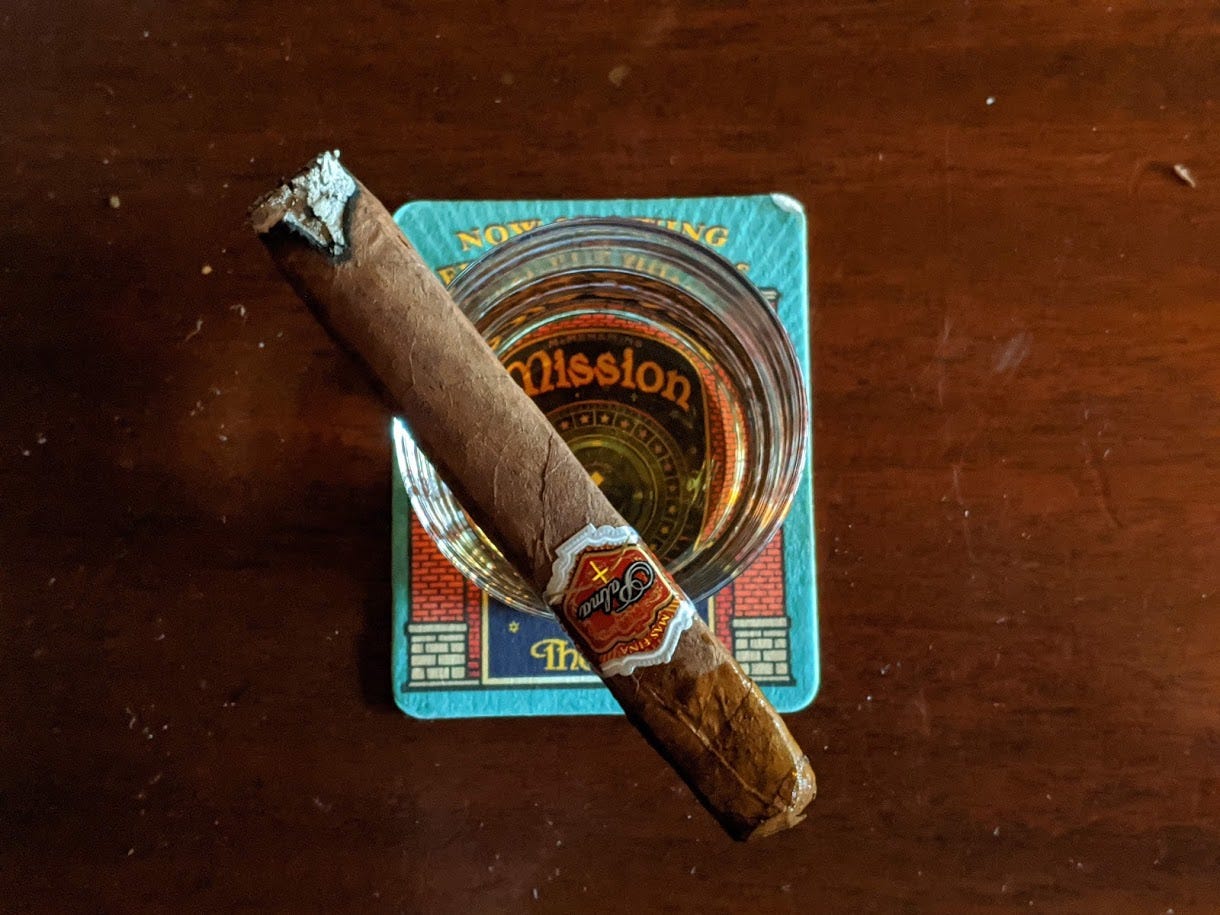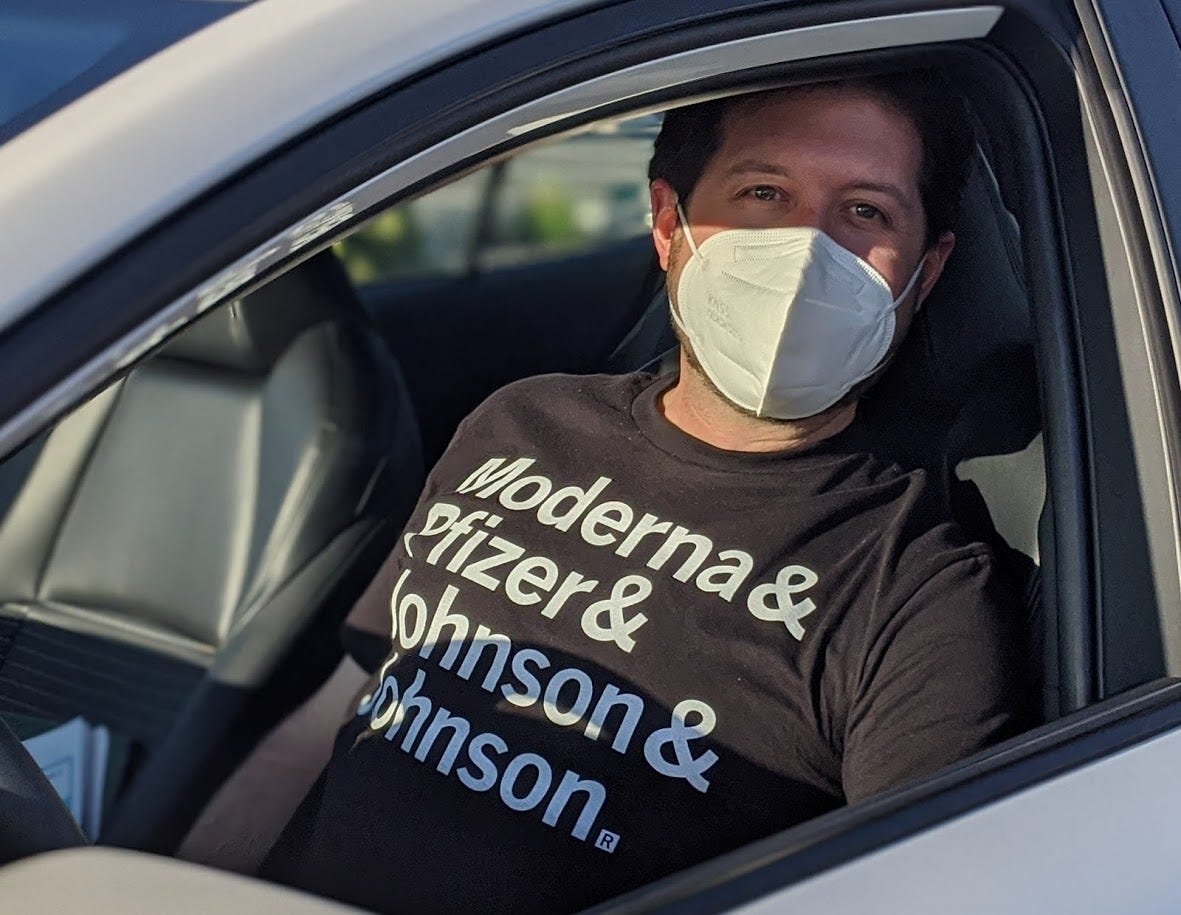Secondhand news
I know what you’re thinking. It’s a slow news week, we’re still social distancing, and there’s nothing you’d rather do than relitigate the smoking ban debates of the early 2000s. OK, maybe not, but do read my new piece at Arc Digital on the creeping expansion of smoking bans, how they lost their connection to the supposed goal of protecting bystanders from secondhand smoke, and the illiberalism of the contemporary anti-smoking movement. A teaser:
While defending bodily autonomy and personal choice in many other contexts, much of the progressive left has adopted an insufferably illiberal prudishness when it comes to tobacco. Their attitude brings to mind judge Robert Bork’s defense of laws forbidding sexual behaviors: “Knowledge that an activity is taking place is a harm to those who find it profoundly immoral.”
This is a topic I’ve covered for a long time, given a current news hook by a bill in North Dakota that would have legalized cigar bars. It passed the House but lost in the Senate by a single vote. It’s notable as one of the few legislative attempts to restore smokers’ rights and also as an illustration of how firm the anti-smoking movement’s grip on governments has become: even in deeply red North Dakota, where 65% of the vote went to Trump in 2020, the prospect of making it legal for consenting adults to gather in a cigar bar and smoke together was a step too far for state legislators.
My antibodies are a wonderland
It was almost exactly a year ago that I started this newsletter as a fun and hopefully mildly helpful thing to do when the pandemic hit and I lost nearly all of my work. Looking back on that first edition, it quoted models suggesting that we would be continuing COVID suppression strategies for eighteen months or more while awaiting the development of vaccines. As hard as this year has been, it’s incredible how much more quickly we ended up with superbly effective vaccines.
I was lucky to get my own first dose last week. My position from the beginning was that I wouldn’t jump the queue but that I would drop whatever I was doing if doses were going to waste or if there was excess capacity. A friend involved in vaccination efforts in rural Oregon texted me to let me know that they were unusually slow one day and wanted to get shots into arms. Within an hour I’d rented a car for the long drive along Hood River, ending with a wonderfully symbolic double rainbow a few miles from the clinic. The unexpected journey was more than 300 miles roundtrip but absolutely worth it.
The vaccine effort is a remarkable success for the United States, but I’m still struck by our collective complacency at not demanding more vaccines, faster. According to the New York Times tracker, about 81% of delivered doses have been used, leaving a stock of about 35 million. That doesn’t include the approximately 30 million doses of the yet-to-be-authorized AstraZeneca vaccine that are ready for use or the tens of millions more that just need to be packaged. That’s more than 80 million doses we should be figuring out how to use as quickly as possible. (Or, if we’re not going to use the AstraZeneca doses, we should release them to countries that will).
As cases surge in specific areas, one priority is focusing capacity to suppress them. A few additional, libertarianish suggestions I’d have liked to see in the running, although they’re all very unlikely at this late date: 1) Authorize the AstraZeneca vaccine immediately. 2) Allow a market for at least some of those doses. 3) If availability of vaccinators is a constraint, bring them in from other countries in exchange for our own surplus of contracted vaccines.
The idea of selling vaccines gets a lot of resistance, but the alternative to allocation by price isn’t allocation according to a perfect plan; in practice, it’s increasingly becoming allocation by who has thick social networks, is willing and able to drive hundreds of miles, hangs out in pharmacies near closing time, or plays fast-and-loose with state guidelines. As supply increases and the oldest and most vulnerable are protected, the case against market allocation gets weaker. (Read John Cochrane on this from December or Tyler Cowen way back in May or Romans Pancs on how to structure an auction.)
I’m personally thrilled to be vaccinated but also aware of how inefficient the process was. I live two blocks from the largest vaccination site in Oregon, where I couldn’t get a dose for any price, but I was able to drive hundreds of miles to get one where supply exceeded demand (and will do it all again in a couple weeks). Would it have been so bad if I could have paid market price for a dose of the AstraZeneca vaccine administered by a visiting Canadian veterinarian at a local pop-up clinic? This is the present libertarians want!
Harm reduction
Just one link on tobacco policy: I highly recommend this article in Philanthropy that turns a skeptical eye on how Bloomberg money and the tobacco settlement are funding a counterproductive campaign against e-cigarettes. Few journalists who cover the topic have internalized how the anti-smoking movement has been hijacked by well-funded ideologues who are actively doing harm to the cause of reducing deaths caused by smoking. Marc Gunther gets it and his report is a long overdue corrective to the usual coverage of anti-vaping campaigns.
Social distancing
To wear: I couldn’t tell you the last time I bought a t-shirt, but I ordered this one in anticipation of my eventual vaccination day. It started as a tweet from Logan Dobson and Raygun turned it into a real thing. Your vaccinator will love it.
To watch: Apparently I’m among the last of my friends to get into The Expanse, which I made up for by taking in all five seasons over the past few months (a sixth, and presumably final season, is on the way). It’s a smart blend of sci-fi adventure and political intrigue; recommended if you need a new show to binge before we go back late nights in bars and restaurants.
To listen: The first song to come up on shuffle when I started my drive to get vaccinated was Big Star’s “Watch the Sunrise,” which was fantastically apt. Relatedly, I’ve been enjoying this recent cover of “Thirteen” by Bedouine, Hurray for the Riff Raff, and Waxahatchee.
To not buy: The NFT cocktail I wrote about in the previous newsletter did actually sell, with one lucky(?) buyer winning(?) a last minute bidding war with a bid of $101.01. You can still mix the drink yourself, of course, but your opportunity to buy the first cocktail ever minted as an NFT has now passed.
To drink: If you attended my class on beer cocktails last week (and judging by ticket sales, you probably didn’t!), you know one of my tricks is shaking an ounce or so of IPA into tropical cocktails. Here’s another example of that technique, improvised a few years ago during a beer cocktail throwdown at the excellent Carwyn Cellars just outside of Melbourne. The “Carwyn Viking” has since become one of my go-to recipes for beer and/or aquavit events.
1 1/2 oz Linie aquavit
1 oz fresh lime juice
1 oz IPA (the more tropical, the better)
1/2 oz falernum
2 dashes Angostura bitters
mint, for garnish
Shake all with ice, strain into a rocks glass, and garnish with the mint.
A favor
If you enjoy this newsletter, whether you read it for the articles or just for the cocktails at the bottom, consider forwarding it on to someone you know who might like it, too.
Newsletter details and obligatory self-promotion
Subscribe here. Read the archive. Follow me on Twitter, Instagram, or my blog. Buy my books. Browse the newsletter bookshop.





